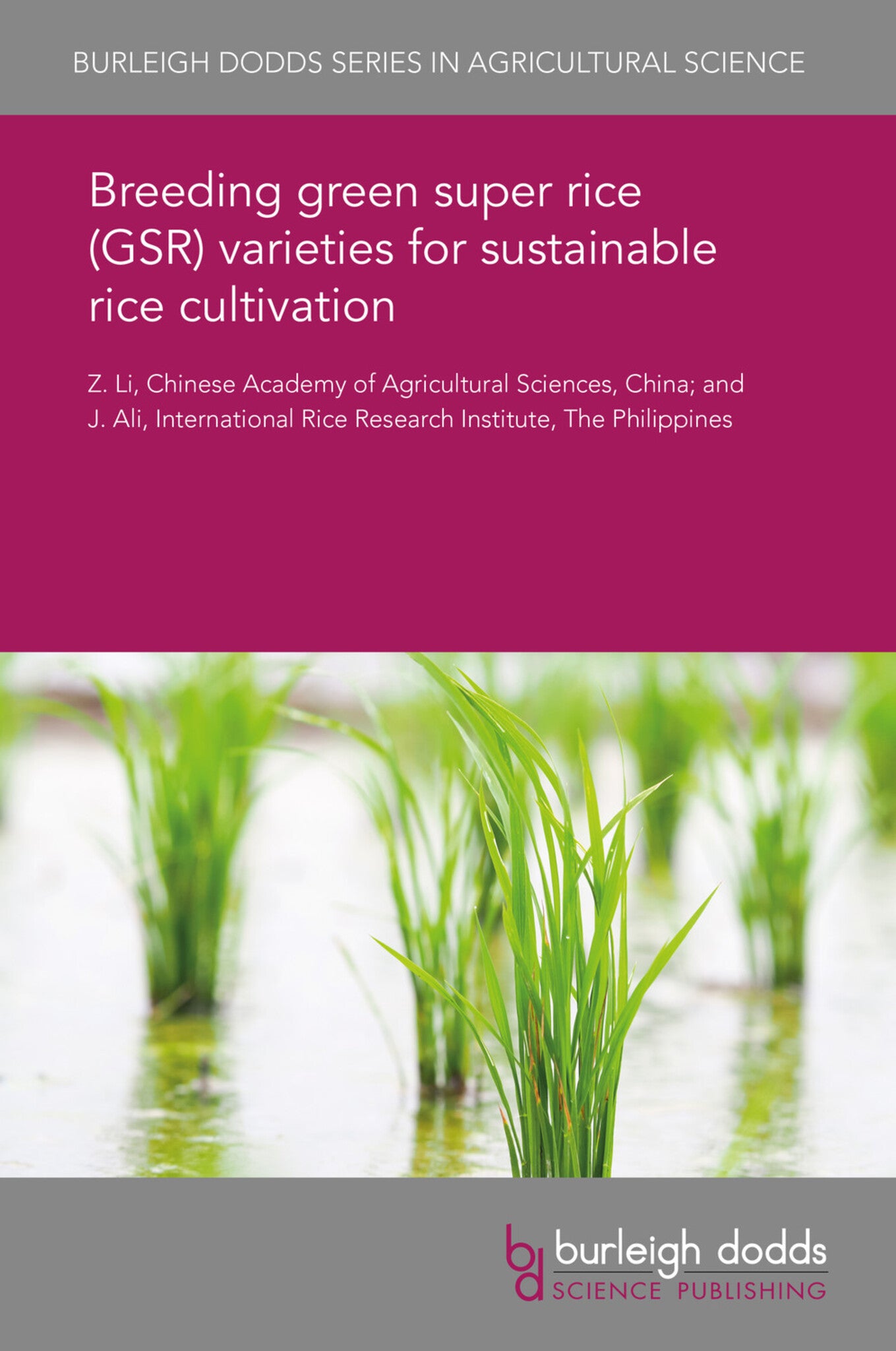We're sorry. An error has occurred
Please cancel or retry.
Breeding green super rice (GSR) varieties for sustainable rice cultivation
Regular price
£25.00
Sale price
£25.00
Regular price
£25.00
Unit price
/
per
Sale
Sold out
Re-stocking soon
Improving low rice productivity in rainfed areas of Asia and Africa and sustaining rice productivity in irrigated rice lands are challenges in the coming decades for the global rice research commun...
Read More

Some error occured while loading the Quick View. Please close the Quick View and try reloading the page.
Couldn't load pickup availability
- Format:
-
31 May 2017

Improving low rice productivity in rainfed areas of Asia and Africa and sustaining rice productivity in irrigated rice lands are challenges in the coming decades for the global rice research community. Green Super Rice (GSR), rice cultivars that can produce high and stable yields under less input, is a concept proposed to meet the challenge. This chapter outlines how GSR would signal a major shift in breeding objectives from yield improvement to high yield potential plus resilience to environmental disturbances. The chapter describes a GSR breeding strategy that integrates strong phenotypic selection in a modified backcross breeding procedure with high-efficient Quantitative/Qualitative Trait Locus network discovery by selective introgression and DNA markers, followed by high-efficient development of GSR varieties by designed QTL pyramiding (DQP) and molecular recurrent selection (MRS). The chapter makes the case that adoption of this breeding strategy will help achieve sustainable rice production and food security.

Price: £25.00
Publisher: Burleigh Dodds Science Publishing
Imprint: Burleigh Dodds Science Publishing
Series: Burleigh Dodds Series in Agricultural Science
Publication Date:
31 May 2017
ISBN: 9781838792381
Format: eBook
BISACs:
TECHNOLOGY & ENGINEERING / Agriculture / Sustainable Agriculture, Agronomy and crop production, TECHNOLOGY & ENGINEERING / Agriculture / Agronomy / Crop Science, Botany and plant sciences, Sustainable agriculture

1 Introduction 2 The concept of green super rice (GSR) 3 GSR breeding techniques 4 Assessing the impact of GSR varieties 5 Linking genomic tools and information to breeding 6 Future trends and conclusion 7 References



